Blog:
Local TV News: The beauty of immediacy

Despite the proliferation of online sources, most Americans still rely on the TV when they want local news. In Hawaii, Mark Platte plays a big role in creating that local news. As news director of Hawaii News Now, Platte oversees newscasts on three of the five stations with local newscasts.
We found Mark when we began poking into our current forum question: What is the value of local TV news? During this time of consolidation, downsizing, and in some cases outsourcing reporting, how has local TV changed to interact with local communities? How can people maximize what they get from this powerful medium with its known brands? What are the risks of major changes like station consolidation or pay-for-play ads? What innovations in local television news hold the most promise?
Mark brings a different perspective on newsroom consolidation than Josh Stearns and Libby Reinish, two activists with Free Press we also interviewed. To join the JA forum on local TV news, click here.
About Mark
 Mark Platte is news director of Hawaii News Now, a combined newsroom that produces programming for three local TV stations and a news website. Platte is the former editor of the Honolulu Advertiser. He moved to TV from newspapers in 2009, when Gannett sold the Advertiser to its local competitor. Previously, Platte was a reporter, then newsroom manager for the Los Angeles Times and reported for many other newspapers, including The Atlanta Journal-Constitution, The Miami Herald, and The Orange County Register.
Mark Platte is news director of Hawaii News Now, a combined newsroom that produces programming for three local TV stations and a news website. Platte is the former editor of the Honolulu Advertiser. He moved to TV from newspapers in 2009, when Gannett sold the Advertiser to its local competitor. Previously, Platte was a reporter, then newsroom manager for the Los Angeles Times and reported for many other newspapers, including The Atlanta Journal-Constitution, The Miami Herald, and The Orange County Register.
JA: How do you decide what goes on which different newscasts?
We have a limited number of resources in the newsroom. So we change shows up as much as we can, especially in the evening because they are one half hour after another. We try to take a package story and break it up in as many ways as we can, so each newscast might get something a little different. We’re trying to push people from one half hour to next, on different channels, which is a very difficult thing to do.
How do you push people from one station to another?
You do it by saying first of all what station the next newscast is on. If you’re on the 5 p.m. simulcast – you’ll say at the end, “Coming up at 5:30 on KHML. . .” We’ll also be pushing from 5 p.m. to 6 p.m. on KGMB. We’ll do a live from newsroom and tell what’s coming up on the different newscasts. And we do that pretty much every newscast. So we’re constantly pushing.
Do you ever take one story and tell different parts on different newscasts?
Yes. An example of that would be [when] the former governor of Hawaii, Linda Lingle, announced she’s running for US senate. That’s a pretty big story because this is a heavily Democratic state and when she served her two terms, she was the first Republican governor in a long time. So this suddenly became a big national race. We basically took her announcement at 5 p.m., which was basically what she’d be doing. Then in the 5:30 we looked at her campaign manager, who is a retired general, and talked to him about his strategy for her. In the 6 p.m., we had a completely different story, on fundraising, and where she stands, and talked to her opponents about money they had raised. I think at 6:30 we had basically what the strategy of each of the campaigns would be. If we go out and shoot something like that, we’re going to slice it up as many ways as we can for the different newscasts to eliminate duplication and repetition in the newscasts. Because they could all be carbon copies of one another, and then people would stop watching.
Do you think viewers see the stations as different? Particularly with the simulcast?
Yes. I do. According to our research, people still see KGMB as a distinct entity, and they see KNHL as a distinct entity, and they see KFVE as a distinct entity. [Editors Note: this is internal research we couldn’t review.] Also, the research shows that based on this model of what we’ve done with the shared services agreement, at 10 p.m. we are actually number one for the first time ever, with a clear, preferred choice for news, just KGMB alone, the CBS affiliate. And then what we saw was KHNL, the NBC affiliate, getting tremendous growth from a younger audience. It’s exactly what we’d hoped for when we started this experiment, You couldn’t hope for any better than that, to say you’ve got two complementary audiences.
Free Press cites Hawaii News Now as a negative example of the consequences of station consolidation, in part because of the simulcast, broadcasting the exact same news at the exact time. Does simulcasting bother you?
The simulcast is the simulcast. That’s just the way it is. But I think we’re giving people more news on different channels. And it’s basically when they want it. For instance, in this market, we have one of the worst traffic messes during rush hour anywhere in the country. So at 5 p.m., a lot of people are not seeing the news. Sometimes they’re not home by 6 or even 6:30. That’s why 6:30 is a great option for people. Well, no one else in the market is doing a 6:30 local news. Nobody in market is doing a 5:30 local news. And nobody in the market is doing a 9 p.m. local news. So to me, you’re giving people more choices, as opposed to saying oh, it’s the same thing all the time.
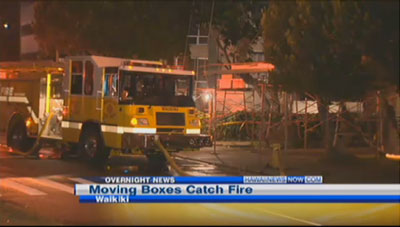
Honolulu firefighters respond to a fire in a high-rise building, October 14, 2011. Photo from www.hawaiinewsnow.com.
Why did you move to TV?
The paper I worked for was owned by Gannett. They decided to sell in this market, to the competitor, even though we were the dominant paper. I wanted to stay in Hawaii. And TV news was something that always interested me. This is, I think, a very exciting medium, and frankly, it’s how most people are getting their news. So once I thought through all that, I thought, why wouldn’t I?
What are the biggest challenges you face running these three stations?
I think it really has to do with making sure we cover all the bases. The biggest difference I had coming from newspapers was that we had so many resources. Even though we were cutting, there’s no comparison between the number of news gatherers you have at a newspaper and what you have at a TV station. So I want to make sure we provide statewide coverage, and do impactful stories.
Raycom (the owner of two stations and news content provider for a third, all of which Platte oversees) is doing well financially. So why are there less resources for TV?
It’s not Raycom, it’s just the TV model. The TV news business is once you have the capital, you have your set and you have your cameras, the rest of it is – I’m not saying there’s no expense to a TV station, because they’re still expensive to run. But they’re run on a different, more efficient model than I think newspapers are. And that’s why I think they’re thriving more than newspapers are.
A Pew report put out last month says 70% of people get news from local TV, but it’s mostly weather and traffic. What do you think is the primary value of local TV news right now?
We spend a lot of time on weather, we have excellent weather and excellent traffic. But I think you can’t beat the immediacy. Like on tsunami night, being on the air for 12 hours straight, either waiting for it to hit, and destroy Hawaii, or getting people the precautions of what they need to do. Because that’s where they are going to tune in. The immediacy of news, the live aspect of news, being on the scene, being able to livestream, we’re doing so much more on the web, with video and raw video, that people like. I think that’s the beauty of TV news.


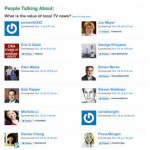

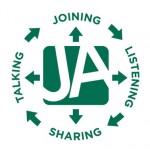
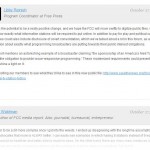
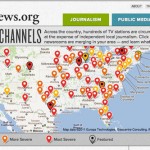







Weigh In: Remember to refresh often to see latest comments!
1 comment so far.
It’s interesting to read that the majority of folks consume local news via television. I would say I read the majority of local news headlines on Twitter, but that’s only a snapshot of the story. I really like how TV news continues the story as a more captivating platform.